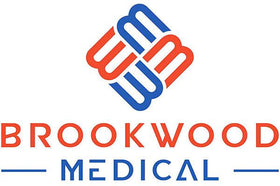Promoting Safe Habits: Mask-Wearing in Schools and Activities

As we navigate through the evolving landscape of health and safety, particularly in schools and various activities, it’s crucial to promote safe habits among children. One such habit that has gained significant importance is the use of masks. In this blog post, we will explore the importance of mask-wearing, especially focusing on infant face masks, effective strategies for implementation, and how we can make it a part of our daily routine in educational settings and extracurricular activities.
The Importance of Mask-Wearing in Educational Settings
When it comes to child safety, education deserves utmost priority. Schools are not just a hub for learning; they are also places where children gather in close proximity. Hence, using masks can create a protective barrier, helping to reduce the transmission of respiratory viruses. This is especially important for younger children, who might be more susceptible to illness.
Health Benefits of Mask-Wearing
Mask-wearing is supported by a wealth of research highlighting its effectiveness in controlling the spread of diseases. Here are some key health benefits:
- Reduces Virus Transmission: Masks play an essential role in minimizing the spread of airborne germs.
- Promotes Health Awareness: Wearing masks fosters a culture of health consciousness among children.
- Encourages Health Responsibility: Children learn the importance of protecting themselves and others.
Incorporating Mask-Wearing in Schools
Implementing mask-wearing policies in schools requires a thoughtful approach that aligns with the culture and practices of the institution. Here’s how to effectively integrate this habit:
Creating a Supportive Environment
The first step in making mask-wearing a norm in schools is creating an atmosphere that supports it. Here are some strategies:
- Educate Students: Conduct assemblies or classroom sessions teaching the importance of mask-wearing.
- Involve Parents: Engage with parents to reinforce the message about the significance of masks at home.
- Positive Reinforcement: Recognize and reward students for consistently wearing masks.
Making Masks Accessible
Access to suitable masks, including infant face masks, is essential for successful implementation. Schools can coordinate with local businesses or health departments to provide masks, ensuring every child is equipped.
Understanding Guidelines and Recommendations
Guidelines from health organizations like the CDC and WHO provide clear directions on mask usage. It’s vital for educators, parents, and students to understand and implement these recommendations.
Care and Maintenance of Masks
Part of encouraging mask-wearing involves educating students about proper mask care. This can include:
- Regular Cleaning: Ensure masks, especially infant face masks, are washed regularly, adhering to hygiene standards.
- Correct Wearing: Teach children how to wear masks properly to ensure they are effective.
- Proper Storage: Discuss how to store masks safely when not in use to avoid contamination.
Encouraging Mask-Wearing in Extracurricular Activities
Extracurricular activities are essential for child development but can pose risks if proper safety measures are not taken. Here are some ways to promote mask-wearing during these activities:
Sports and Physical Activities
Incorporating mask-wearing in sports requires creativity and commitment. Here are strategies to make it work:
- Designated Mask Breaks: Allow students to have breaks where they can safely remove their masks.
- Choose Suitable Masks: Encourage the use of breathable, comfortable masks suitable for physical activity.
- Make it Fun: Host themed day challenges to inspire students to wear their masks creatively.
Community Projects and Events
For community events involving children, such as clubs or fairs, ensure that all participants are aware of mask requirements:
- Engagement with Local Vendors: Collaborate with vendors who can provide masks for the event.
- Communicate Effectively: Share the benefits of mask-wearing prior to the event through social media and newsletters.
The Role of Educators and Health Professionals
Teachers and health professionals play a pivotal role in influencing attitudes towards mask-wearing. They can foster a positive environment that encourages children to embrace this practice.
Training and Resources
Continued education for staff about the latest health recommendations is essential. Providing resources that help them educate their students effectively can lead to more significant adherence to mask-wearing.
- Workshops and Seminars: Regular workshops can reinforce the importance of masks and provide updates on health policies.
- Information Flyers: Hand out informative flyers that explain proper mask use and care.
Fostering Acceptance and Understanding Among Peers
Peer influence is powerful among children. Fostering a positive attitude toward mask-wearing can encourage reluctant students to adopt this safe behavior.
Creating Peer Support Groups
Establishing groups where students can discuss their health concerns and share experiences can create a sense of community:
- Buddy Systems: Pair students to remind and encourage each other about mask-wearing.
- Open Discussions: Hold discussion circles where students can express their feelings about wearing masks.
Encouraging Parents' Involvement
Parents play a crucial role in reinforcing mask-wearing habits both at home and at school. Educating parents can maximize the impact of these efforts.
Resources for Parents
Providing parents with resources helps them understand how they can support their children effectively:
- Guidelines on Mask Selection: Parents should know what makes a good mask for their children, focusing on infant face masks and comfort.
- Health Tracking: Encourage them to be aware of any health updates in the community or school regarding masks.
Celebrating Mask-Wearing Achievements
Celebrate milestones related to mask-wearing. This can create a culture where wearing masks is viewed positively.
Recognition Programs
Consider implementing programs that recognize classes or groups that excel in following mask-wearing guidelines. Examples could include:
- Class of the Month: Acknowledging classes with the best mask compliance celebrates students’ commitment to health.
- Fun Challenges: Engaging activities that involve creativity, like design contests for mask decorations.
Your Role in This Initiative
Whether you are a parent, educator, or community member, everyone has a part to play in promoting safe habits. By being proactive, we can ensure that children feel safe and supported in their environments, whether at school or during extracurricular activities.
Final Thoughts: Masking Up for a Bright Future
The journey to promoting safe habits through mask-wearing is a collective effort that requires understanding, patience, and creativity. As we move forward, let's remember the significance of habits like wearing infant face masks. Through education, community involvement, and support, we can make mask-wearing a simple yet powerful tool in safeguarding our children and promoting healthier environments for everyone. Together, let’s mask up for a brighter, safer future!






